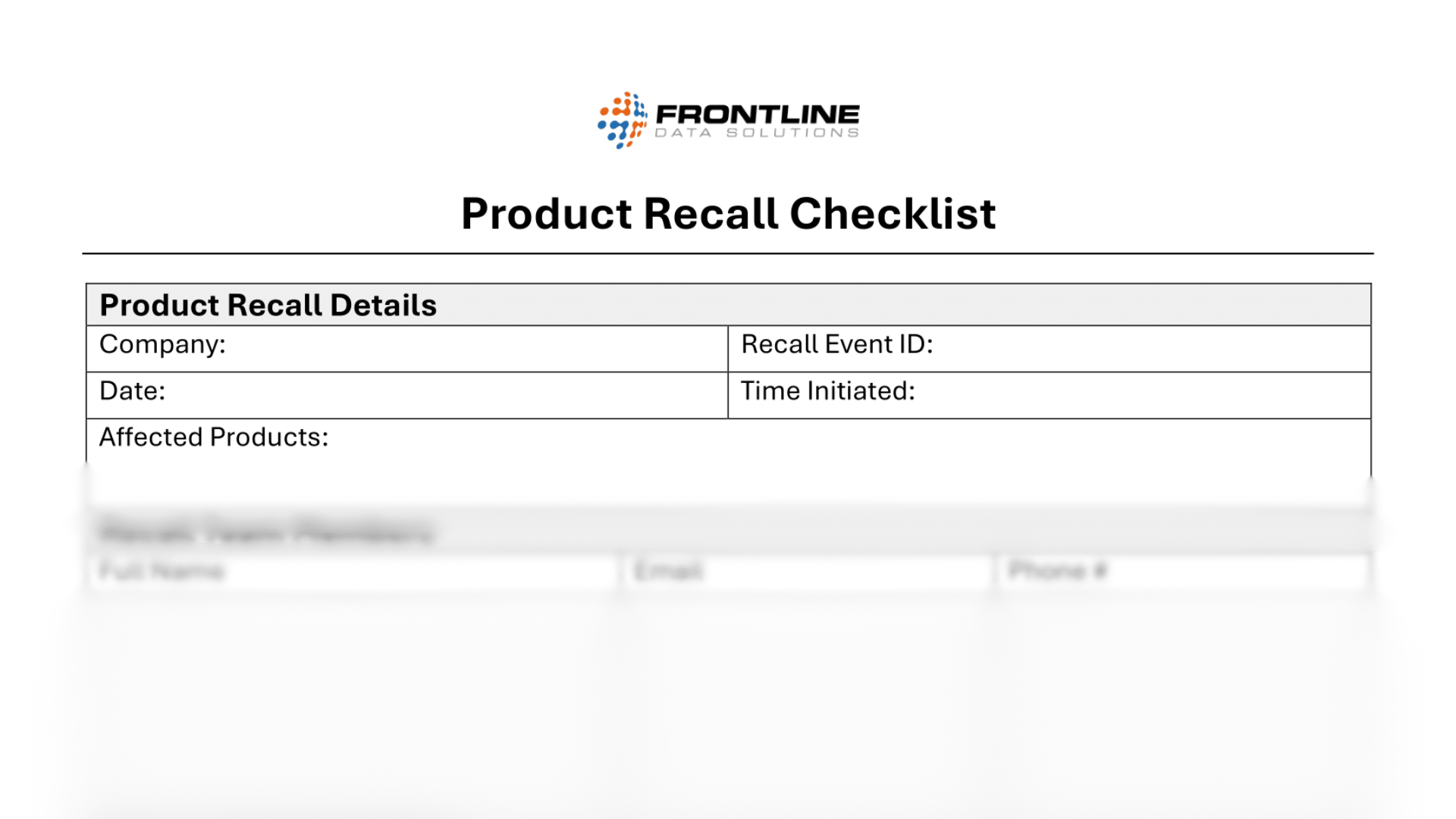Product Recall Checklist
Resources >Template Library > Product Recall Checklist
Download this free Product Recall Checklist from Frontline Data Solutions to document any recalls that your company coordinates.
Get a Free Copy Instantly

Why You Need a Product Recall Checklist
A product recall is one of the most stressful situations your company can face. Without a clear plan in place, it’s easy to feel overwhelmed or make mistakes. A product recall checklist gives your team a roadmap to follow so that even under pressure, your response is swift, coordinated, and compliant.
The goal of the checklist is to protect your customers, your brand, and your bottom line. It ensures that you isolate the issue, communicate effectively, and meet regulatory requirements while minimizing disruptions to your operations.
What to Include in a Product Recall Checklist
An effective product recall checklist should walk your team through each phase of the process. Start by verifying the issue through internal testing or customer reports. Once you confirm the root cause, stop distribution of the affected product and alert your recall coordinator.
From there, assemble a response team that includes quality, regulatory, legal, operations, and communications staff. Notify any required agencies, such as the FDA or USDA, and begin reaching out to customers and distributors. Arrange for product returns or disposal, document the steps you’ve taken, and conduct a root cause analysis to prevent recurrence.
At the end of the recall, debrief with your team, submit final reports, and update your recall procedures based on lessons learned.
Who Should Be Involved in the Recall Process
Managing a recall effectively requires input from multiple departments. Your quality assurance team plays a key role in identifying and isolating the issue, while regulatory or legal experts ensure that the response aligns with applicable laws. Operations and logistics help track and recover products, and customer service communicates with buyers.
Your communications or PR team may need to issue public statements or respond to media inquiries. Throughout the process, leadership should stay informed and provide guidance to keep the recall on track.
Best Practices for Managing Recalls
Preparation is key to handling a recall successfully. Assign clear roles in advance so team members know their responsibilities before a recall ever occurs. Use batch or lot numbers to track affected products and make your notification process fast and accurate. Keep detailed records of all the corrective actions you take.
Download our product recall checklist to get an idea of what information to track. You can edit it so that it’s more aligned with your processes or products.
More Templates to Discover
Found this template helpful? You might like some of these, too:
